#Chevrolet 210
Explore tagged Tumblr posts
Text
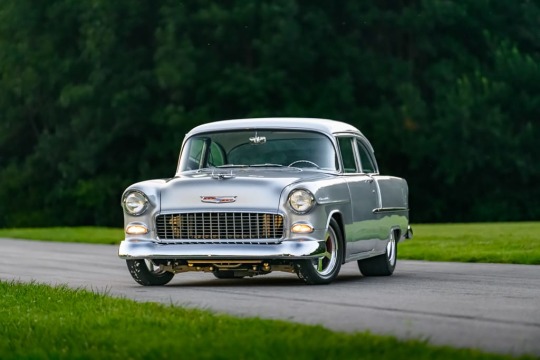
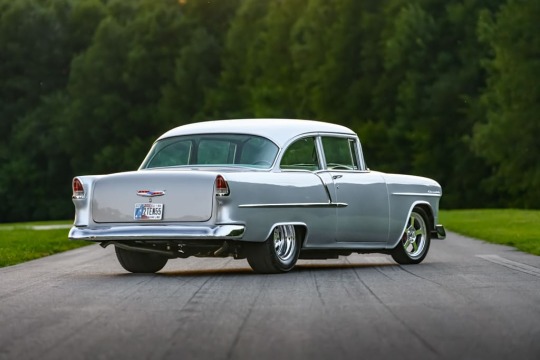

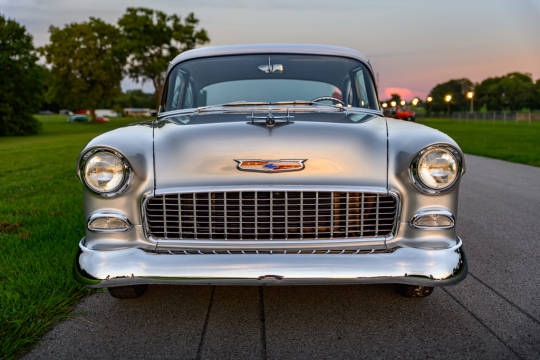

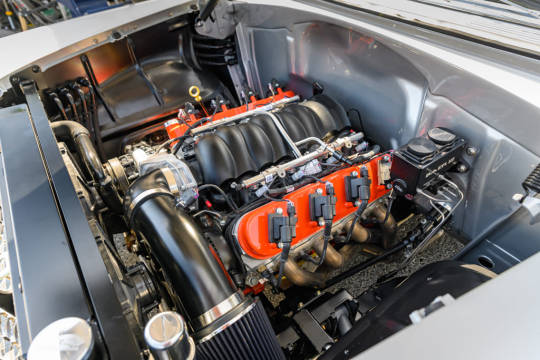
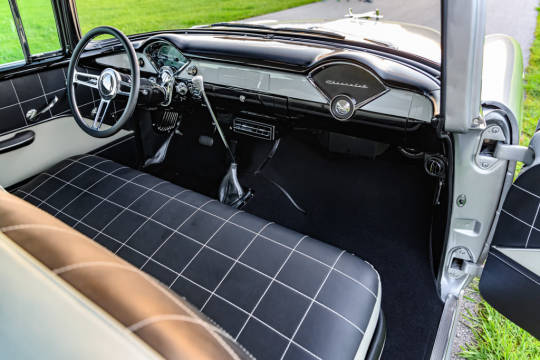
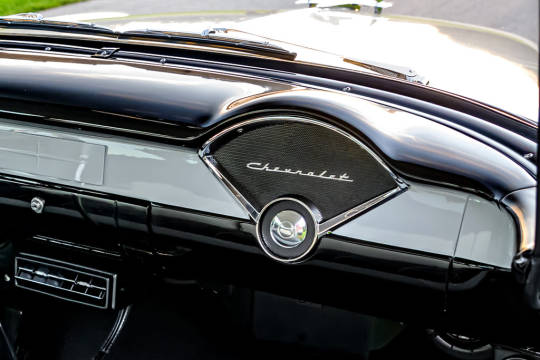
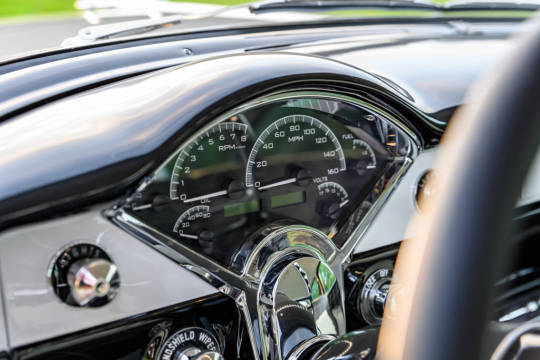


1955 Chevrolet 210
TECH CHECK Owner: Eric Mead, Evansville, Indiana Vehicle: ’55 Chevrolet 210
Engine Type: BluePrint Engines Chevrolet LS3 Displacement: 376 ci Compression Ratio: 10.7:1 Bore: 4.070 inches Stroke: 3.622 inches Cylinder Heads: BluePrint Engines aluminum Camshaft: BluePrint Engines hydraulic roller (0.612/0.585-inch lift, 225/238 deg. duration) Ignition: E38 Engine PCM Assembly: BluePrint Engines Exhaust: Church Boys Racing by Stainless Works 1-7/8-inch primaries to 3-inch collector and 2.5-inch stainless pipes bent by Dave Favor’s Performance Exhaust, MagnaFlow Mufflers Ancillaries: Holley mid-mount accessory drive, PRC radiator and core support, SPAL Fans Output: 530 hp at 6,100 rpm, 508 lb-ft at 5,200 rpm
Drivetrain Transmission: ’99 GM 4L80E Automatic with TransGo valvebody kit prepared by Wathen’s Transmission (Owensboro, KY) Torque Converter: FTI Billet 3,200 stall Driveshaft: Driveline Plus Rear Axle: Strange Engineering 9-inch with Truetrac differential, 3.70 gears, 35-spline axles
Chassis Chassis: Roadster Shop SPEC Front Suspension: Strange single-adjustable coilovers, stabilizer bar Rear Suspension: Strange single-adjustable coilovers, parallel four-link, Panhard bar Brakes: Baer four-wheel disc, 12-inch front rotors with four-piston calipers, 11-inch rear rotors with four-piston calipers, Baer Remaster master cylinder
Wheels & Tires Wheels: Bogart Racing Wheels D-5; 17×4.5 front with 2.25-inch backspace, 15×10 rear with 5.5-inch backspace Tires: Mickey Thompson Sportsman S/R front, 26×6.00R17; Mickey Thompson ET Street S/S rear, 295/55R15
Interior Upholstery: Holtsclaw Custom Upholstery (Francisco, IN) Carpet: Cars Inc. black loop carpet Seats: Original bench seat with black-and-white vinyl Delray pattern Steering: Summit steering column with Eddie Motorsports steering wheel Shifter: Lokar Dash: Original Instrumentation: Dakota Digital VHX HVAC: Vintage Air Wiring: American Autowire by Andy’s Hot Rod Shop (Mulkeytown, IL)
Exterior Bodywork and Paint: Reisinger Custom Rebuilding (Evansville, IN) and Andy’s Hot Rod Shop Paint: Sateen Silver/white by James Smith of Road Runner Restorations (Johnston City, IL) Hood: Stock Grille: Danchuk Bumpers: Danchuk Glass: Auto City Classics Fuel Tank: 15.5-gallon Tanks Inc. galvanized powedercoated silver
105 notes
·
View notes
Text


1956 El-Morocco Chevrolet 210 Convertible
My tumblr blogs:
www.tumblr.com/germancarssince1946 & www.tumblr.com/frenchcarssince1946 & www.tumblr.com/englishcarssince1946 & www.tumblr.com/italiancarssince1946 & www.tumblr.com/japanesecarssince1947 & www.tumblr.com/uscarssince1935 & www.tumblr.com/swedishcarssince1946
11 notes
·
View notes
Photo

From the car files: a 1956 Chevrolet 210 sedan.
2 notes
·
View notes
Text

1955 Chevrolet 210. - What a cool car
176 notes
·
View notes
Text

129
JAN. 11th, 2021
3 notes
·
View notes
Photo

Two Ten
4 notes
·
View notes
Text
1955 Chevrolet vehicles.
The top image features a Chevrolet 210, a popular model known for its stylish design and comfortable ride. The bottom image showcases a Chevrolet 3100, a classic pickup truck known for its ruggedness and versatility. Both vehicles have been modified with lowered stances, custom wheels, and a striking red paint scheme, demonstrating the potential for creative interpretation and personalization within the classic car world.

140 notes
·
View notes
Text




Chevrolet 210 two-door 1955. - source Bring a Trailer.
148 notes
·
View notes
Text

1955 Chevrolet
The cool 1955 Chevy in "TWO-LANE BLACKTOP" with Laurie Bird and Dennis Wilson

1955 Chevrolet 210 and 1970 Pontiac GTO
#chevrolet#chevy#car#cars#muscle car#american muscle#hot rod#drag racer#drag racing#street racing#pontiac gto#pontiac#gto
137 notes
·
View notes
Text

1956 El-Morocco Chevrolet 210 Hardtop Coupé
My tumblr blogs:
www.tumblr.com/germancarssince1946 & www.tumblr.com/frenchcarssince1946 & www.tumblr.com/englishcarssince1946 & www.tumblr.com/italiancarssince1946 & www.tumblr.com/japanesecarssince1947 & www.tumblr.com/uscarssince1935 & www.tumblr.com/swedishcarssince1946
4 notes
·
View notes
Text

1957 Chevrolet 210 Station Wagon
Hoonigan Toy Drive 2021
One of the perfect vehicles to deliver presents in.
#Chevy#Chevrolet#BelAir#ChevyBelAir#ChevroletBelAir#GeneralMotors#TriFive#Tri5#V8Engines#CarPhotography#AmericanCars#StationWagons#1950sCars#ClassicCars#Automotive#Automobile#Automation#Transportation#WhiteWallTires#Hoonigan#HooniganClubDays#Chevy210
23 notes
·
View notes
Text
Chevrolet 210 1957
21 notes
·
View notes



